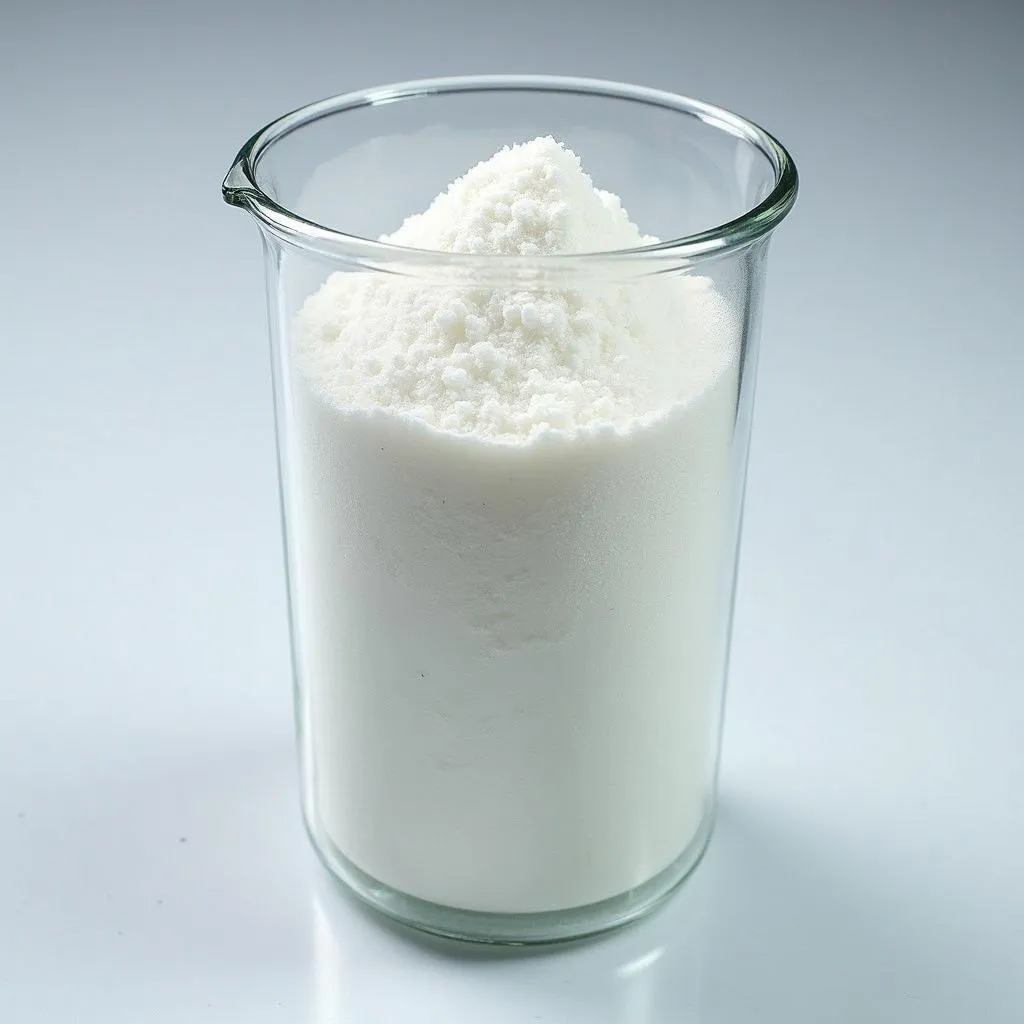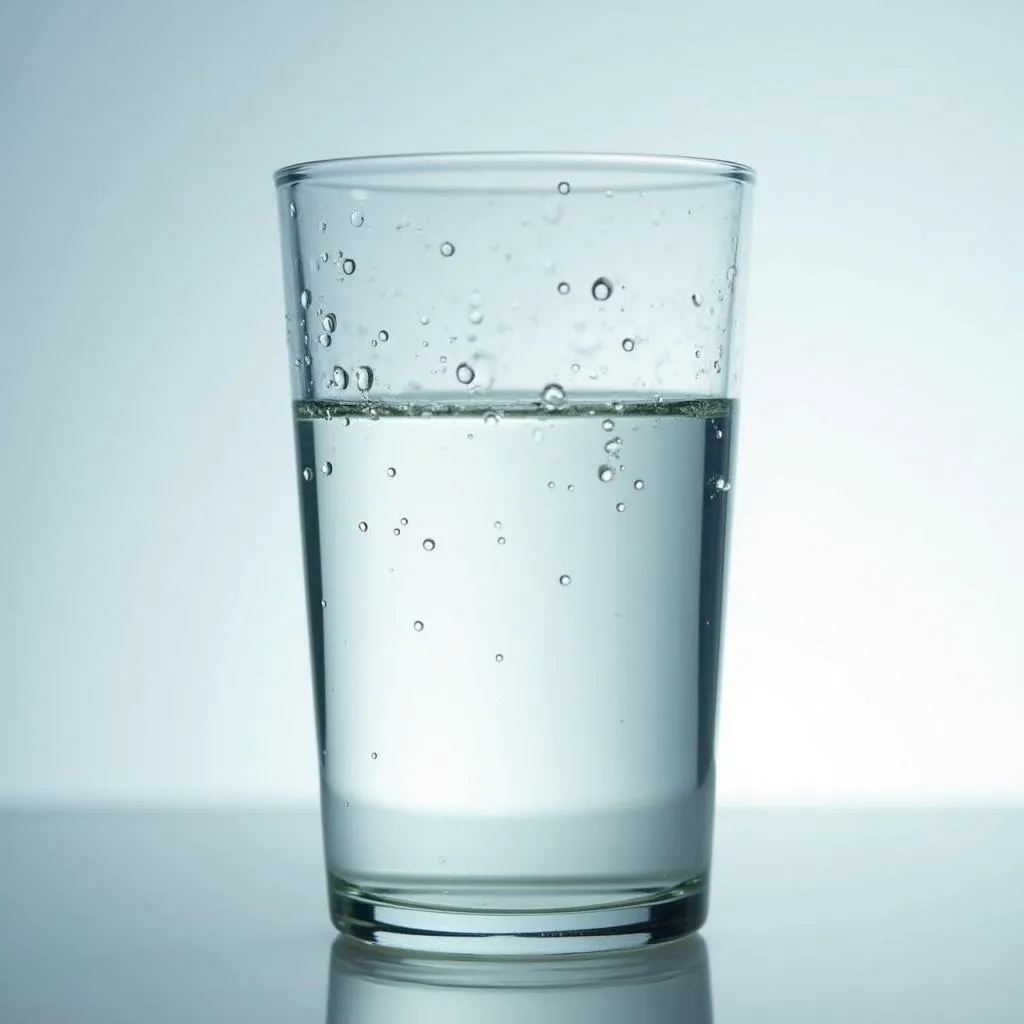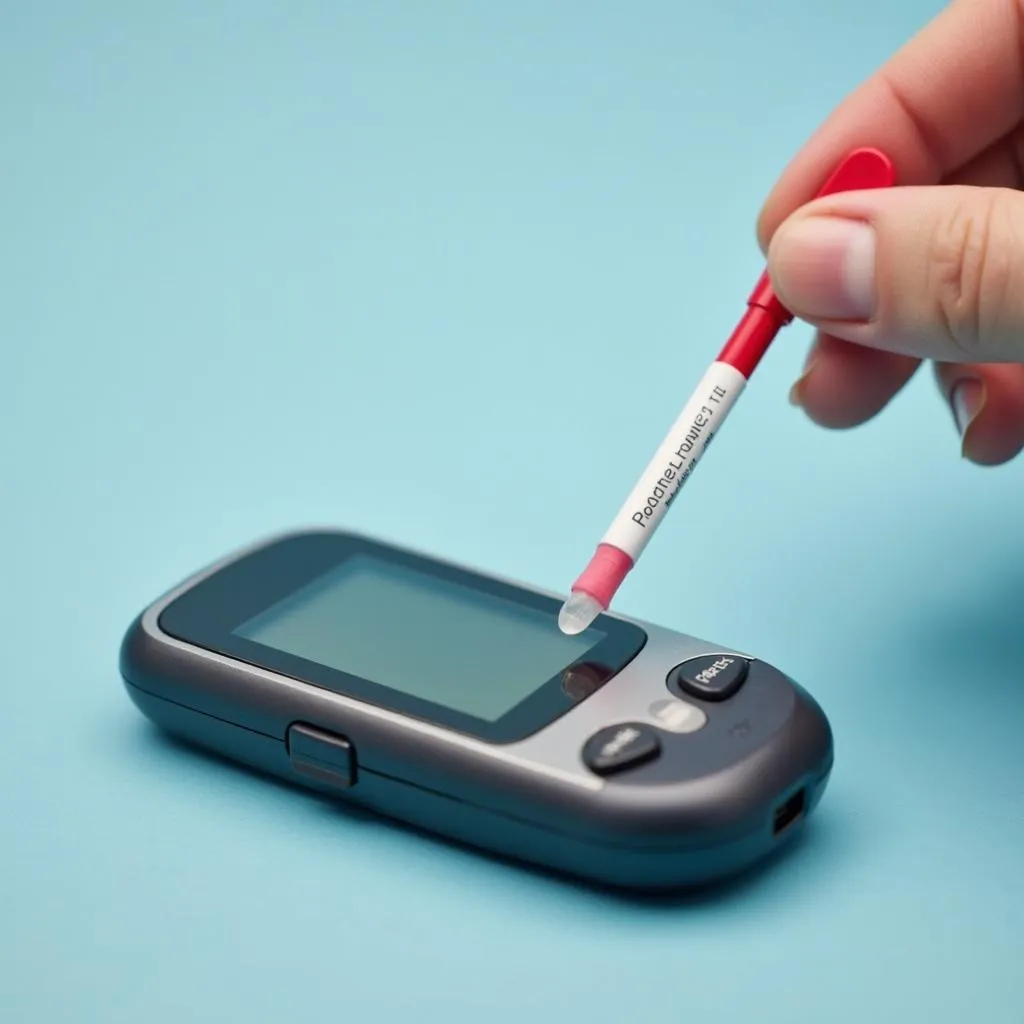You might be surprised to learn that glucose, a simple sugar that fuels our bodies, doesn’t have a vibrant color like the rainbow of candies it sweetens. In its purest form, glucose is a white, odorless powder.
 White Glucose Powder in a Beaker
White Glucose Powder in a Beaker
Unveiling the Appearance of Glucose
While we often associate color with flavor, especially in the realm of food, the color of glucose is far from descriptive of its sweetness. In fact, this simple sugar, crucial for life’s energy, is typically found as a white, crystalline powder.
When dissolved in water, glucose forms a clear, colorless solution, much like sugar dissolved in your morning coffee or tea.
 Clear Glucose Solution in a Glass
Clear Glucose Solution in a Glass
Why is Glucose Colorless?
The reason glucose lacks a distinct color lies in its chemical structure and how it interacts with light. Color is perceived when a substance absorbs certain wavelengths of light and reflects others. Glucose, however, does not selectively absorb wavelengths in the visible spectrum. Instead, it either transmits light, allowing it to pass through, or it reflects all wavelengths equally, resulting in the perception of white.
Glucose in Different Forms
While pure glucose might be colorless, it’s important to remember that it rarely exists in isolation, especially in the context of food and beverages. When glucose combines with other sugars, amino acids, or undergoes various processing methods, it can contribute to changes in color.
For instance, the browning of bread during baking or the golden hue of a caramelized onion are examples of how heat can trigger chemical reactions involving glucose, resulting in the development of color. These reactions, known as Maillard reactions, involve complex interactions between sugars like glucose and amino acids, ultimately altering the chemical composition and, consequently, the color of the food.
Think of glucose as a blank canvas. It’s the other ingredients and the processes it undergoes that add the splashes of color to the final masterpiece.
The Importance of Understanding Glucose
Although the color of glucose may seem like a trivial detail, understanding its properties and behavior is crucial in various fields. From food science and nutrition to medical diagnostics and pharmaceutical development, the role of glucose is multifaceted.
In the medical field, for instance, measuring blood glucose levels is vital for diagnosing and managing diabetes. These tests often involve colorimetric methods, where the concentration of glucose in the blood sample is determined by the intensity of a colored product formed through a chemical reaction.
 Blood Glucose Meter and Test Strip
Blood Glucose Meter and Test Strip
Conclusion
So, while the answer to “What is the color of glucose?” might be simply “white” or “colorless,” delving deeper reveals a world of fascinating chemistry and far-reaching implications. Glucose, despite its seemingly simple appearance, plays a vital role in numerous biological processes and industrial applications, reminding us that sometimes the most fundamental elements can be the most impactful.
FAQ
1. Does glucose change color when heated?
Yes, glucose can change color when heated due to chemical reactions like caramelization and the Maillard reaction.
2. Is glucose always in a solid form?
No, glucose can exist in a solid (powder) form and dissolved in liquids to create a solution.
3. How does the color of glucose affect its taste?
The color of glucose itself doesn’t affect its taste. It’s other compounds and reactions that contribute to both color and flavor changes, especially in food.
4. Why is it important to know the color of glucose in medical settings?
While pure glucose is colorless, its concentration in solutions like blood can be determined using colorimetric methods in medical tests, aiding in diagnosis and monitoring of conditions like diabetes.
5. Can the color of food always indicate the presence of glucose?
Not necessarily. While glucose can contribute to color changes in food, other factors and ingredients also play significant roles in food coloration.
Need Help? Contact Us!
For any assistance or inquiries, please don’t hesitate to reach out to us:
Phone: 0373298888
Email: [email protected]
Address: 86 Cầu Giấy, Hà Nội.
Our dedicated customer support team is available 24/7 to assist you.

